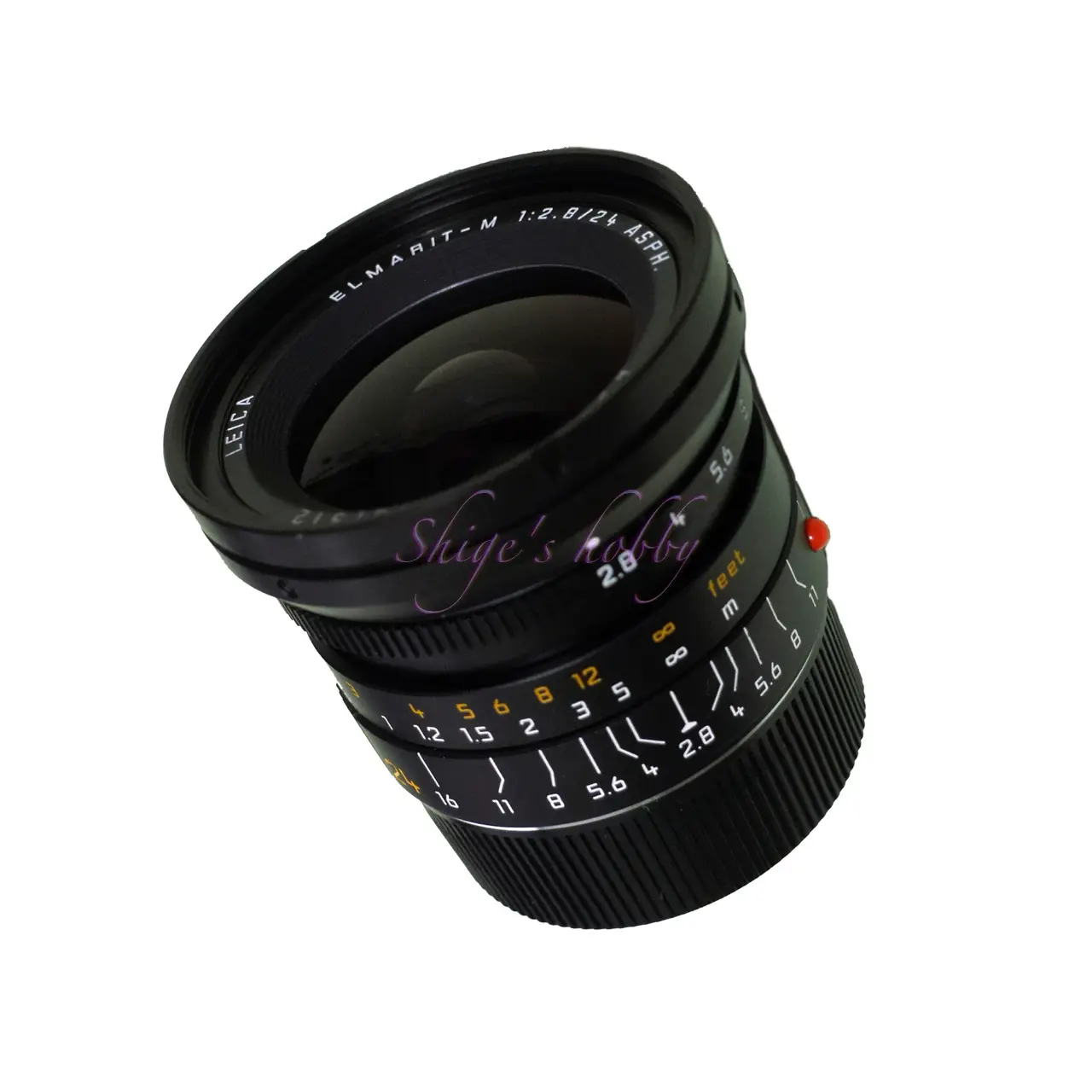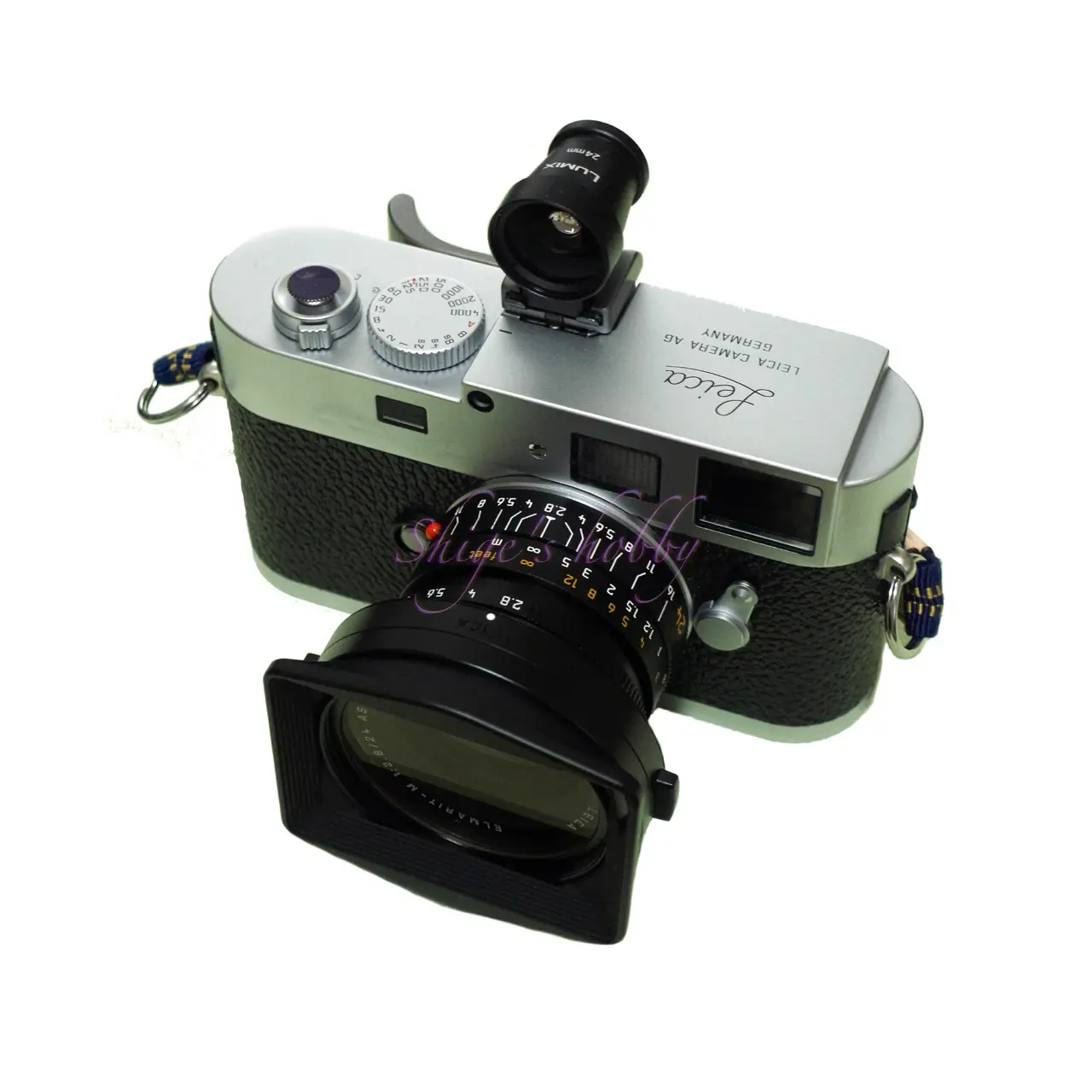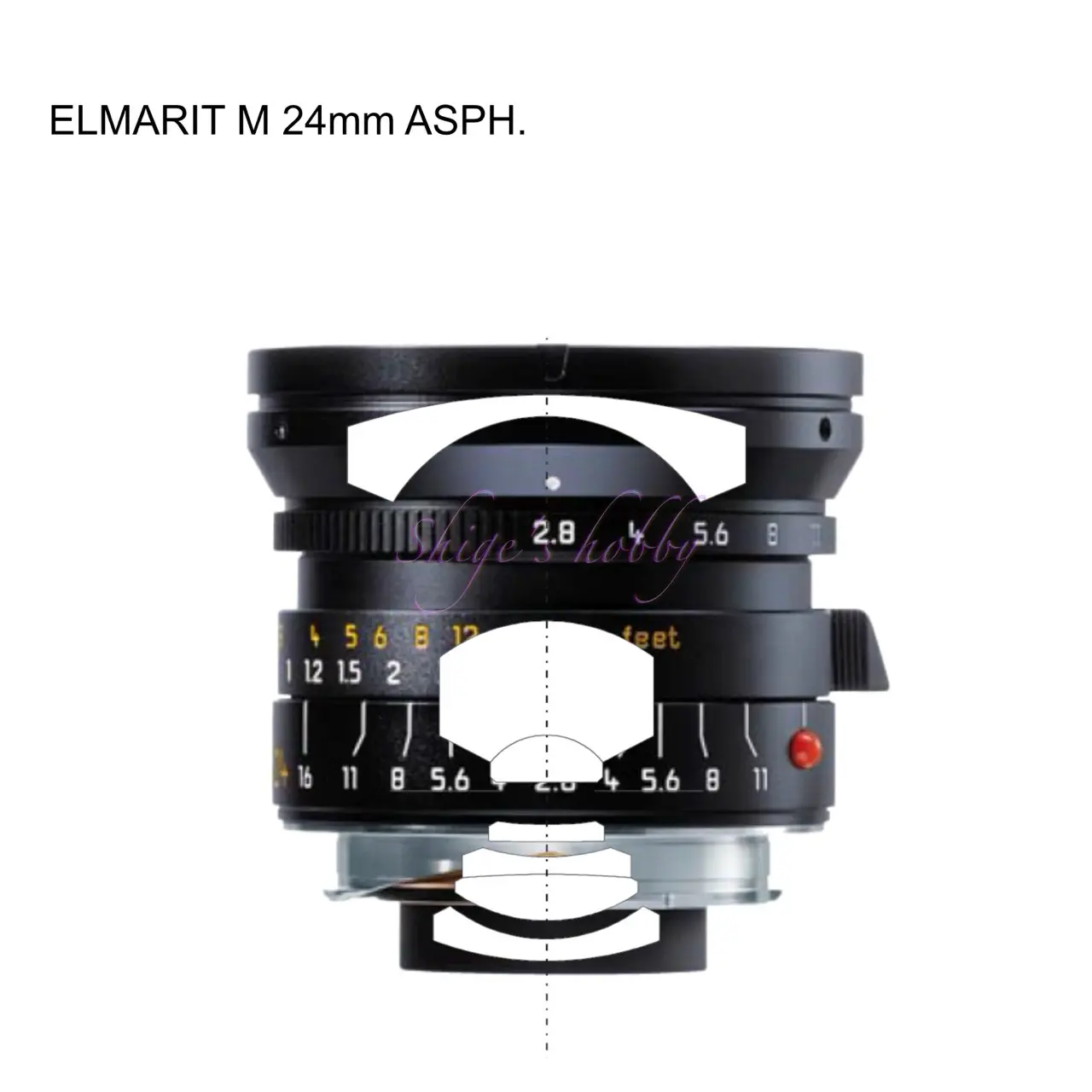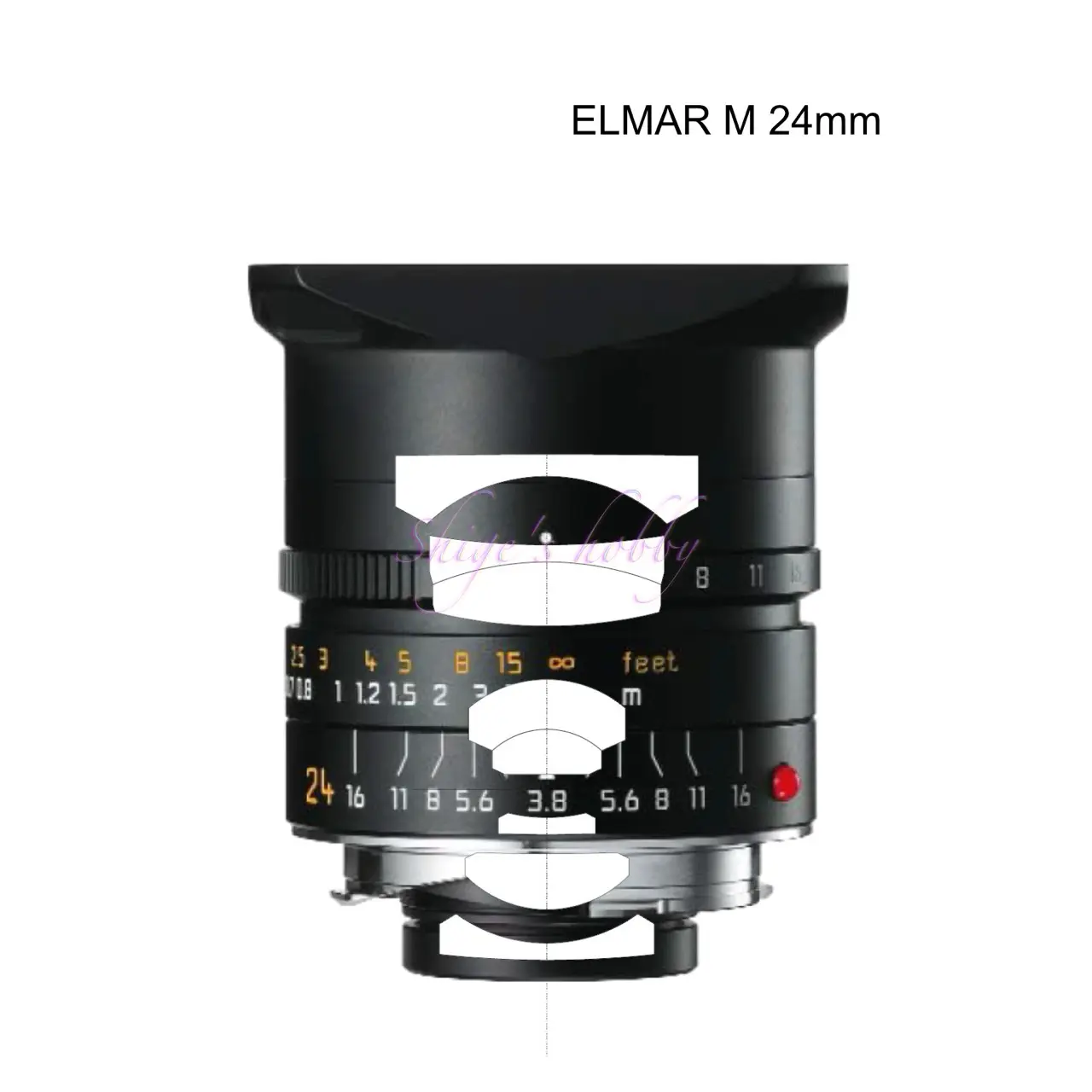Last updated on 2025-06-13
A review and photo examples using the Leica Elmarit-M 24mm F2.8 ASPH. with the film camera LEICA M6
Table of contents
Gallery
- The example was taken with LEICA M6 +KODAK E100VS +NIKON COOLSCAN ED V.
- The location was Oigawa Railway in Shizuoka Prefecture.
Review


1.Overview
The Elmarit M 24mm F2.8 ASPH. is a Leica M-mount wide-angle prime lens with a focal length of 24mm released in 1996. There was the ELMARIT R 24mm for the R-mount, but this lens is the first to be released with a focal length of 24mm for the Leica M-mount.
The main specifications are as follows, and detailed specifications are listed in the table.
- Aperture value: 2.8
- Lens construction: 9 elements in 7 groups
- 1 aspherical lens
- Aperture blades: 8
- Minimum focusing distance: 0.7m
- Leica M rangefinder camera rangefinder linkage: 0.7m
- Hood: Dedicated square hook-type hood
- Lens color variations: Silver and black
The 6-bit code of the Elmarit M 24mm M-mount lens is a mixture of those with and without the code added depending on the year of manufacture.
Lenses without a 6-bit code have a newer mount shape, so you can change it at Leica Support for a fee.
Up until the LEICA M8.2, the only lens detection method supported was 6-bit code, so this code was useful, but since the digital M-series Leicas from the M9 onwards allow you to select lens detection from the menu, the advantage of the 6-bit code is that lens information can be transmitted automatically if the camera is set to read 6-bit codes.
2.Usage
The Elmarit 24mm is a lens from the era when it was made, and its slightly loose depiction is suitable for film shooting. In terms of operation, if the helicoid grease is appropriate, the focus ring movement is smooth and comfortable, making it a useful lens for capturing a wide range of scenery, such as everyday snapshots and travel records.
The focal length of 24mm is -4mm wider than 28mm with a little margin, as the numbers indicate, and +3mm narrower than 21mm, so it is an exquisite position that fills the gap between focal lengths, with a weaker wide-angle feel.
This does not apply to me, who uses lenses at random, but for photographers who want to use one lens for a long time, the choice between 21mm and 24mm is quite difficult.
For photographers who mainly use 35mm as a wide-angle lens, skipping 28mm and going to 24mm is one option. If you choose 21mm from 35mm, you will feel a large change in the angle of view.
For photographers who mainly use 28mm wide-angle lenses, 24mm is an intermediate focal length, so it would be reasonable to choose 21mm, which has a significantly different angle of view.
This is largely dependent on personal taste, so it is better to test it out before purchasing if possible. With digital cameras, the cost of testing is almost zero, so you can try it out easily.
This lens is not very popular on the used market, and depending on the condition, you can find it at a low price, but as of 2024, it is rising in price in comparison to other Leica M-mount lenses.
3.Summary
To sum up the ELMARIT M 24mm F2.8 ASPH., its softer rendering really shines when used with film.
When using with digital cameras, the successor ELMAR 24mm seems to be more suitable.
Focal lengths narrower than 21mm but wider than 28mm have come to be used at the wide-angle end of zoom lenses, making it a major focal length. There are two types of photographers who choose 24mm as a prime lens. Those who try out any focal length, and those who don’t care about 21mm & 28mm and settle for 24mm.
Either way, this lens is suitable for photographers who want a softer rendering rather than high resolution.
Lenses related to ELMARIT 24mm
As for lenses related to the ELMARIT 24mm, the Leica R mount 24mm focal length ELMARIT R 24mm, which is said to have almost the same lens configuration as the MINOLTA MC W.ROKKOR-SI 1:2.8 f=24mm (1973), was released in 1974 and was sold new until mid-2000.
The ELMARIT M 21mm ASPH., which uses the same aspherical lens, is a sister lens that was sold one year after this lens. As of 2024, this 21mm and this lens are no longer on sale.
Although it is a special lens, LEICA is focusing on the M mount SUMMILUX series, and the SUMMILUX M 24mm F1.4 ASPH. is on sale, but it is quite expensive, about 500,000 yen for a cheap used one and about 1 million yen for a new one.
The successor lens, the ELMAR 24mm F3.8 ASPH., has been released. The maximum aperture of this lens is slightly darker, but the lens barrel is compact. In the lens comparison diagram below, the ELMAR 24mm looks larger, but this is because the diagram shows the ELMAR 24mm with the hood attached.
Looking at the lens construction, the MTF diagram of the ELMARIT M 24mm shows that the periphery is worse than the center at full aperture, and this improves as the aperture is narrowed, but even when narrowed, the graph lacks stability. This is only on the MTF, so it is hardly noticeable in the actual depiction.
In comparison, the later ELMAR 24mm F3.8 ASPH. simplifies the rear group to keep costs down, while actively correcting aberrations by using three lenses in the front group. Looking at the MTF diagram of the ELMAR 24mm F3.8 ASPH., the graph is stable from full aperture, and the graph becomes even flatter as the aperture is narrowed.
The MTF diagram is listed on the technical sheet of the lens distributed by Leica.
The lens construction diagrams are taken from each company’s PDF and the sizes have been adjusted by us, so they are not exact.


Focal length: 24mm and 25mm
The two giants of European cameras, Leica and Zeiss, offer 24mm and 25mm focal lengths to fill the gap between 21mm and 28mm. The Voigtlander brand, like CARL ZEISS, uses a focal length of 25mm.
The focal lengths between 24mm and 25mm are a matter of error in actual photography, and even if you use a tripod and change lenses, the difference in the results is small.
Nevertheless, if the lens specifications explicitly state 24mm and 25mm, it seems like there is a big difference between the two, but this is just the ramblings of a sick lens gourmet.
The main M-mount lenses with focal lengths of 24mm and 25mm are as follows.
- LEICA SUMMILUX 24mm F1.4
- LEICA ELMARIT 24mm F2.8
- LEICA ELMAR 24mm F3.8
- Carl Zeiss BIOGON 25mm F2.8 ZM
- Voigtlander Snap Shot Skopar 25mm F4 L39
- Voigtlander COLOR SKOPAR 25mm F4 VM
Looking at the specifications, the LEICA ELMARIT 24mm F2.8 and the Carl Zeiss BIOGON 25mm F2.8 look almost the same, but the lens construction shows the individuality of each company.
First of all, Leica has been actively incorporating aspherical lenses since this time, and this lens also uses one aspherical lens.
In contrast, the lens construction of the Carl Zeiss BIOGON 25mm F2.8, which does not use an aspherical lens, is complex and interesting.
The characteristic three-piece laminated lens in the center of the BIOGON 25mm seems like it could be contained in one lens if an aspherical lens is used.
Lens construction is a reflection of the lens design philosophy, and ultimately leads to differences in depiction. The difference in depiction changes depending on the light and atmosphere at the time of shooting, so it is subjective, but my general impression is that the ELMARIT feels pale and the BIOGON is sharp.
The lens construction diagrams are quoted from each company’s PDF, and the sizes have been adjusted here, so they are not exact.

Since the late 1990s, the 24mm focal length has been adopted for the wide-angle end of standard zoom lenses in line with the evolution of lens design. Before that, the wide-angle end was dominated by 28mm, and before that, 35mm. When using an old Leica zoom lens that starts at 35mm, it feels quite narrow, and it makes me realize that I am quite familiar with wide-angle lenses, including those on smartphones.
In addition, some camera zoom lens manufacturers have set the focal length of the wide-angle end to 20mm, and other companies will likely follow suit depending on market sales.
With zoom lenses, distortion is inevitably a concern at the wide-angle end, so 20mm seems to widen the angle of view a little too much, but with the evolution of image processing correction, this may no longer be a concern in the future.
Specification and Competitor
| Items | ELMAR | ELMARIT ASPH. | BIOGON |
| Focal length(mm) | 24 | 24 | 25 |
| Max aperture | 3.4 | 2.8 | 2.8 |
| Min aperture | 16 | 16 | 16 |
| Lens Construction | 8 elements in 6groups | 9elements in 7groups | 9elements in 7groups |
| Leaf blade | 8 | 8 | 10 |
| Min distance(m) | 0.7 | 0.7 | 0.5 |
| Lens length(mm) | 40.6 | 46 | 46.6 |
| Max diameter(mm) | 53 | 58 | 53 |
| Filter Size(mm) | E46 | E55 | E46 |
| Lens hood | 12465 (Same as 21mm) | 12592(Same as 21mm /hood) 14041(Same as 21mm /Hood front cover) | Lens Shade 21/25mm Lens Shade 25/28mm |
| Release date | 2008 | 1996 | 2005 |
| Production number | – | About 7,000- | – |
| Weight(g) | 260 | 388(Silver) 290(Black) | 260 |
| List Price(Yen/No-tax) | ¥320,000- | – | ¥110,000- |
Reference links
- Description of the Elmarit M 24mm f/2.8 ASPH. by LEICA Wiki
- Leica lenses p48 has an introductory article (link to Amazon affiliate)
Update history
- 2025.4.19
- 2024.03.21
- 2023.12.17
Affiliate links
- Please see the disclaimer regarding advertising here.
- Italicized links in the text are advertisement links that take you to other sites.
- Leica R lens・Ads by ebay
- Leica M lens・Ads by ebay
- Leica TL・Ads by ebay
- Leica SL・Ads by ebay

Amazon Prime Sale



Be First to Comment